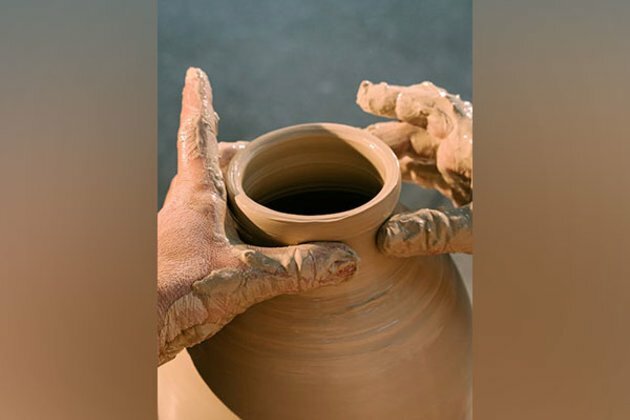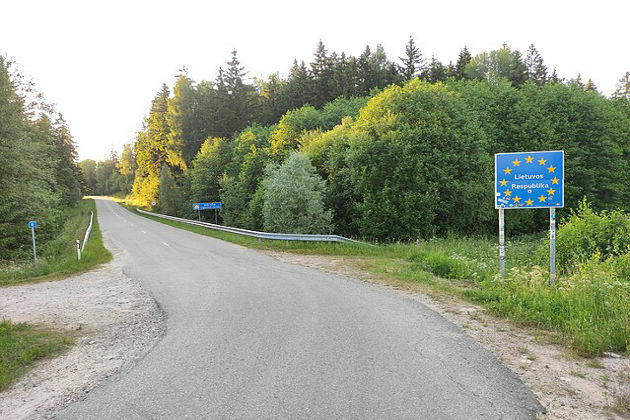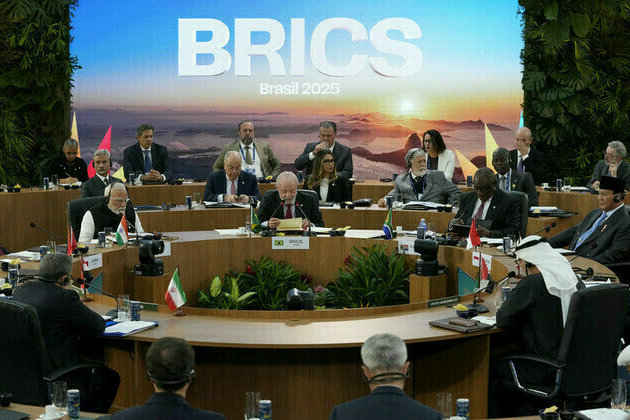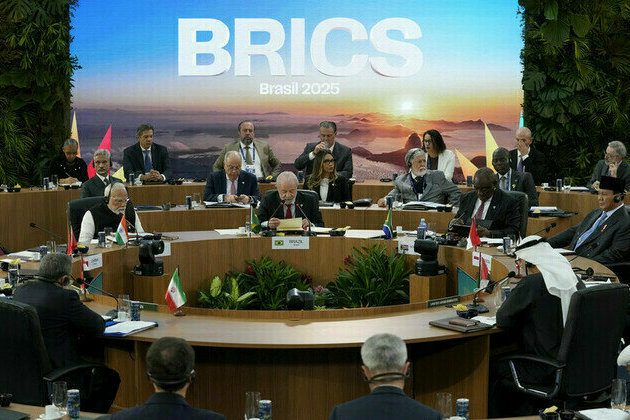Pottery colours tell a lot about power of empires: Study
ANI
18 Mar 2023, 23:57 GMT+10

Chicago [US], March 18 (ANI): Our use of colour to express who we are, where we come from, and what matters to us plays a significant role in our daily lives. Archaeologists have compared the hues on various pieces of prehistoric Peruvian pottery in a study published in the Journal of Archaeological Science: Reports. They discovered that ceramics used in ceremonies were made by potters all over the Wari empire using the same rich black colour, demonstrating the empire's influence.
The Wari empire spread over Peru's highlands and coastal areas from 600-1050 CE. "People sometimes think of the Inka as the first big empire in South America, but the Wari came first," says Luis Muro Ynonan, the study's corresponding author and a research associate and former postdoctoral scientist at the Field Museum in Chicago.
The Wari didn't leave behind a written record (or at least a system similar to the one we use now). "Since they didn't use writing, material culture -- things like pottery -- would have been an important means for conveying social and political messages," says Muro Ynonan. "The visual impact of these objects would have been super powerful." Even little details, like using the correct shade of a colour, could help signify an object's importance and legitimacy as a part of the empire.
"I remember seeing some of these Wari-influenced pots as an undergraduate archaeology student in Peru, they're fascinating," says Muro Ynonan. "The rich black colour on them is very distinctive, I've been obsessed with it for years." Muro Ynonan finally got to pursue his interest in pigment in-depth during his postdoctoral position at the Field Museum.
He and his co-authors, including Donna Nash, an adjunct curator at the Field and associate professor and head of anthropology at the University of North Carolina Greensboro, examined pottery from different regions under Wari influence, focusing on the chemical makeup of the black pigment used.
The exact formulation of pigments varied from site to site, but overall, there was one striking similarity: many of the Wari pots examined in the study used black pigment made from minerals containing the element manganese.
"Some of the sites, specifically in northern Peru, used a different recipe for black, using iron- and calcium-rich minerals before the Wari arrived, but after the Wari took over, they switched to the manganese-based recipes," says Muro Ynonan. The shift makes the authors suspect that the Wari empire asserted some sort of "quality control" over the pottery produced in different regions, perhaps even supplying artisans with the "correct" black pigment. "In general, black minerals are relatively easy to obtain from the valleys we looked at," says Muro Ynonan. But just any old black mineral didn't fit the official Wari look -- instead, he thinks that artisans may have been supplied with the manganese-bearing minerals from the Wari capital to produce the right shade of black.
The changes in hue are subtle, but Muro Ynonan says that the symbolic meaning of using "Wari black" may have been very important. "In general in the Andean region, the colour black is related to the ancestors, to the night, to the passage of time. In Wari times, the colour was likely important for imposing a specific Wari ideology to the communities they conquered."While the colours on Wari pottery might indicate imperial control, the ceramics from different regions do maintain their own local character. "Local potters had a lot of flexibility in producing hybrid material culture, combining the Wari imperial style and decoration with their own," says Muro Ynonan. The ceramics were unified by the use of black pigments that were controlled and put in circulation by the Wari empire through its imperial trade channels, but from there, artists could put their own spin on their work.
"One thing I hope people will take away from this study is that every beautiful artefact you see in a museum was made by real people who were very intelligent and possessed specific technologies to achieve their goals," says Nash, co-author of the study. "Further, these people shared technologies and made choices. Artisans talked to each other and learned from each other, but sometimes multiple ways of doing things, such as creating black lines and decoration on a decorated pot, co-existed. These different approaches to the same problem may have persisted because of wealth or class differences, but it may have been that some people were willing to try new things, while others preferred their traditions." (ANI) Share
Share
 Tweet
Tweet
 Share
Share
 Flip
Flip
 Email
Email
Watch latest videos
Subscribe and Follow
Get a daily dose of South America Times news through our daily email, its complimentary and keeps you fully up to date with world and business news as well.
News RELEASES
Publish news of your business, community or sports group, personnel appointments, major event and more by submitting a news release to South America Times.
More InformationInternational
SectionFaulty IT system at heart of UK Post Office scandal, says report
LONDON, U.K.: At least 13 people are believed to have taken their own lives as a result of the U.K.'s Post Office scandal, in which...
Travelers can now keep shoes on at TSA checkpoints
WASHINGTON, D.C.: Travelers at U.S. airports will no longer need to remove their shoes during security screenings, Department of Homeland...
Rubio impersonator used AI to reach officials via Signal: cable
WASHINGTON, D.C.: An elaborate impersonation scheme involving artificial intelligence targeted senior U.S. and foreign officials in...
Warsaw responds to migration pressure with new border controls
SLUBICE, Poland: Poland reinstated border controls with Germany and Lithuania on July 7, following Germany's earlier reintroduction...
Deadly July 4 flash floods renew alarm over NWS staffing shortages
WASHINGTON, D.C.: After months of warnings from former federal officials and weather experts, the deadly flash floods that struck the...
Putin fires transport chief, later found dead in suspected suicide
MOSCOW, Russia: Just hours after his sudden dismissal by President Vladimir Putin, Russia's former transport minister, Roman Starovoit,...
Latin America
Section"It's quite funny, I'm playing the 100th in a pink-ball game": Starc reflects on his 100th test
New Delhi [India], July 11 (ANI): Ahead of his 100th Test of his career, Australian pacer Mitchell Starc said it's quite funny that...
Nifty down 90 points, Sensex lost 370 points in opening amid weak IT earnings and tariff jitters
New Delhi [India], July 11 (ANI): Indian stock markets opened under pressure on Friday as continued tariff tensions led by US President...
The peace deal that put women first: What Colombia taught the world
Representatives of women's organizations and networks that were part of the first delegation of gender experts at the talks in Havana...
BRICS in Rio: From Global South to global power
The 17th BRICS summit was more than a photo op. It was a coordinated rejection of Western power and a declaration of intent A few...
What just happened in Rio should terrify the West
The 17th BRICS summit was more than a photo op. It was a coordinated rejection of Western power and a declaration of intent A few...
Trump threatens Brazil with 50% tariffs over 'witch-hunt' trial
President Lula da Silva has pushed back, vowing reciprocal action and defending the country's court system ...













